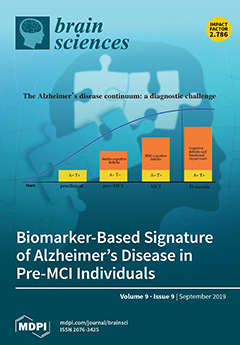Background: Frailty, a state of increased vulnerability, could play a role in the progression of vascular dementia. We aim to describe the changes in cerebrovascular reactivity of older adults with frailty and vascular-type mild cognitive impairment (MCIv).
Methods: This was a cross-sectional study. A comprehensive geriatric assessment, neuropsychological evaluation, and transcranial Doppler ultrasound (TCD) was performed on 180 participants who were allocated into four groups: healthy (
n = 74), frail (
n = 40), MCIv (
n = 35), and mixed (frail + MCIv) (
n = 31). ANOVA and Kruskal–Wallis tests were used for the analysis of continuous variables with and without normal distribution. Multinomial logistic regression was constructed to identify associated covariates.
Results: Subjects in the mixed group, compared to healthy group, were older (75.0 ± 5.9 vs 70.3 ± 5.9 years;
p < 0.001), showed lower education (9.3 ± 6.4 vs 12.2 ± 4.0 years;
p = 0.054), greater frequency of diabetes (42% vs 12%;
p = 0.005), worse cognitive performance (z = −0.81 ± 0.94), and reduced left medial-cerebral artery cerebrovascular reactivity (0.43 ± 0.42 cm/s). The mixed group was associated with age (odds ratio (OR) 1.16, 95% Confidence Interval (CI) = 1.06–1.27;
p < 0.001), diabetes (OR 6.28, 1.81–21.84;
p = 0.004), and Geriatric Depression Scale (GDS) score (OR 1.34, 95% CI = 1.09–1.67;
p = 0.007).
Conclusions: Frailty among older adults was associated with worse cognitive performance, diabetes, and decreased cerebral blood flow.
Full article






